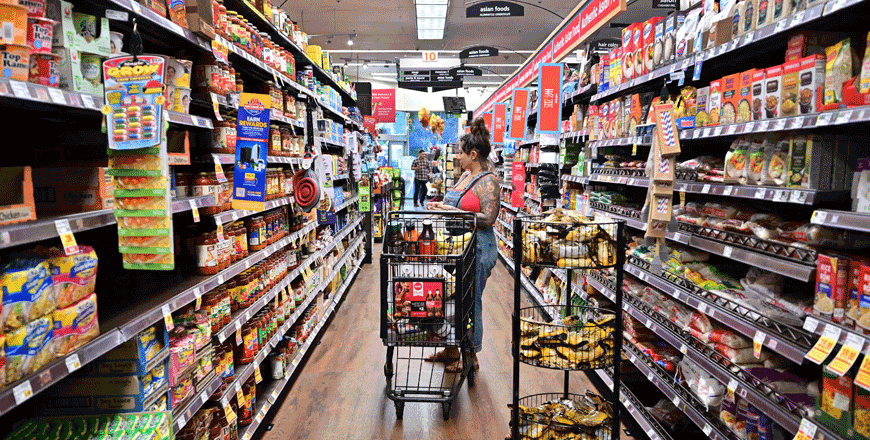You are here
Key US inflation gauge cools in November as rate cut looms
By AFP - Dec 24,2023 - Last updated at Dec 24,2023

A vendor sells fruits and vegetables in the Manhattan borough of New York City on Thursday (AFP photo)
WASHINGTON — A measure of inflation favoured by the US Federal Reserve weakened in November on lower energy prices, government data showed on Friday, providing further reassurance to policymakers keen to rein Compared with a month prior, the index decreased in price increases.
The personal consumption expenditures (PCE) price index rose 2.6 per cent from a year ago in November, markedly below October's 2.9 per cent figure, the Department of Commerce said.
0.1 per cent — the first drop since early 2020 — on the back of a slump in energy prices and lower food costs.
"Today marks a significant milestone, with inflation over the last six months at the pre-pandemic level of two percent," US President Joe Biden said in a statement.
With the volatile food and energy segments removed, "core" PCE inflation cooled to an annual rate of 3.2 per cent, down slightly from October as well.
This adds to data indicating that inflation is coming down as the US central bank holds interest rates at a 22-year high to firmly lower inflation back to its long-term two percent target.
With consumption and the jobs market remaining relatively resilient, hopes of a so-called "soft landing" where inflation comes down without triggering a damaging recession have risen.
Biden added: "A year ago, most forecasters predicted it would require a spike in joblessness and a slowdown to get inflation down. I never believed that."
But he warned that the government's work is "far from finished", with many households still squeezed by elevated costs — vowing to urge companies to pass on savings as prices moderate.
'Encouraging'
Calling the data "encouraging reading", economist Michael Pearce of Oxford Economics said they signaled that consumption growth is slowing to a more sustainable pace while pressures from inflation melt away.
Friday's numbers also showed that consumption ticked up 0.2 per cent from a month prior in November, while personal incomes increased too.
A bounce in payroll growth and robust wage increases helped push personal incomes up, with spending rising as well.
"That allowed the personal saving rate to rise a bit," Pearce added. "We think households will continue to rebuild saving into next year."
From October to November, the core PCE price index inched up 0.1 per cent, the Commerce Department said.
Rate cuts on horizon
"Barring some unforeseen shock to prices, the Fed is done raising rates this cycle and the expansion should continue well into the New Year," said economist Robert Frick of the Navy Federal Credit Union.
Pearce added that with price pressures "weakening fastest in the services sector and with inflation set to fall further over the coming months, rate cuts are coming into view".
But even as the data fuels optimism, Pantheon Macroeconomics chief economist Ian Shepherdson warned of the risks that inflation falls below officials' target more quickly than expected.
"Against that backdrop, markets will push even harder for the Fed to ease by more than their current 75 basis points forecast next year, and policymakers will have little choice but to follow their lead," he said.
Related Articles
WASHINGTON — The US central bank's favored measure of inflation edged higher last month on the back of rising fuel prices, according to gove
WASHINGTON — The US inflation measure most closely watched by the Federal Reserve declined sharply in May, official figures showed Friday, r
WASHINGTON — The US Federal Reserve (Fed) is prepared to raise interest rates higher — and hold them there — to bring down above-target infl
















